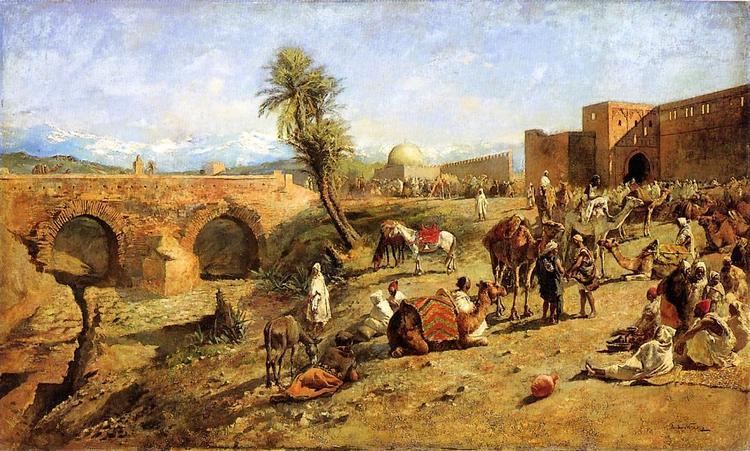 | ||
A caravan (from Persian: کاروان) is a group of people traveling together, often on a trade expedition. Caravans were used mainly in desert areas and throughout the Silk Road, where traveling in groups aided in defense against bandits as well as helping to improve economies of scale in trade.
In historical times, caravans connecting East Asia and Europe often carried luxurious and lucrative goods, such as silks or jewelry. Caravans could therefore require considerable investment and were a lucrative target for bandits. The profits from a successfully undertaken journey could be enormous, comparable to the later European spice trade. The luxurious goods brought by caravans attracted many rulers along important trade routes to construct caravanserais. Caravanserais were roadside stations which supported the flow of commerce, information, and people across the network of trade routes covering Asia, North Africa, and southeastern Europe, especially along the Silk Road. Caravanserais provided water for human and animal consumption, washing, and ritual ablutions. Sometimes they had elaborate baths. They also kept fodder for animals and had shops for travelers where they could acquire new supplies. In addition, some shops bought goods from the traveling merchants.
However, the volume a caravan could transport was limited even by Classical or Medieval standards. For example, a caravan of 500 camels could only transport as much as a third or half of the goods carried by a regular Byzantine merchant sailing ship.
Present-day caravans in less-developed areas of the world often still transport important goods through badly passable areas, such as seeds required for agriculture in arid regions. An example are the camel trains traversing the southern edges of the Sahara Desert.
